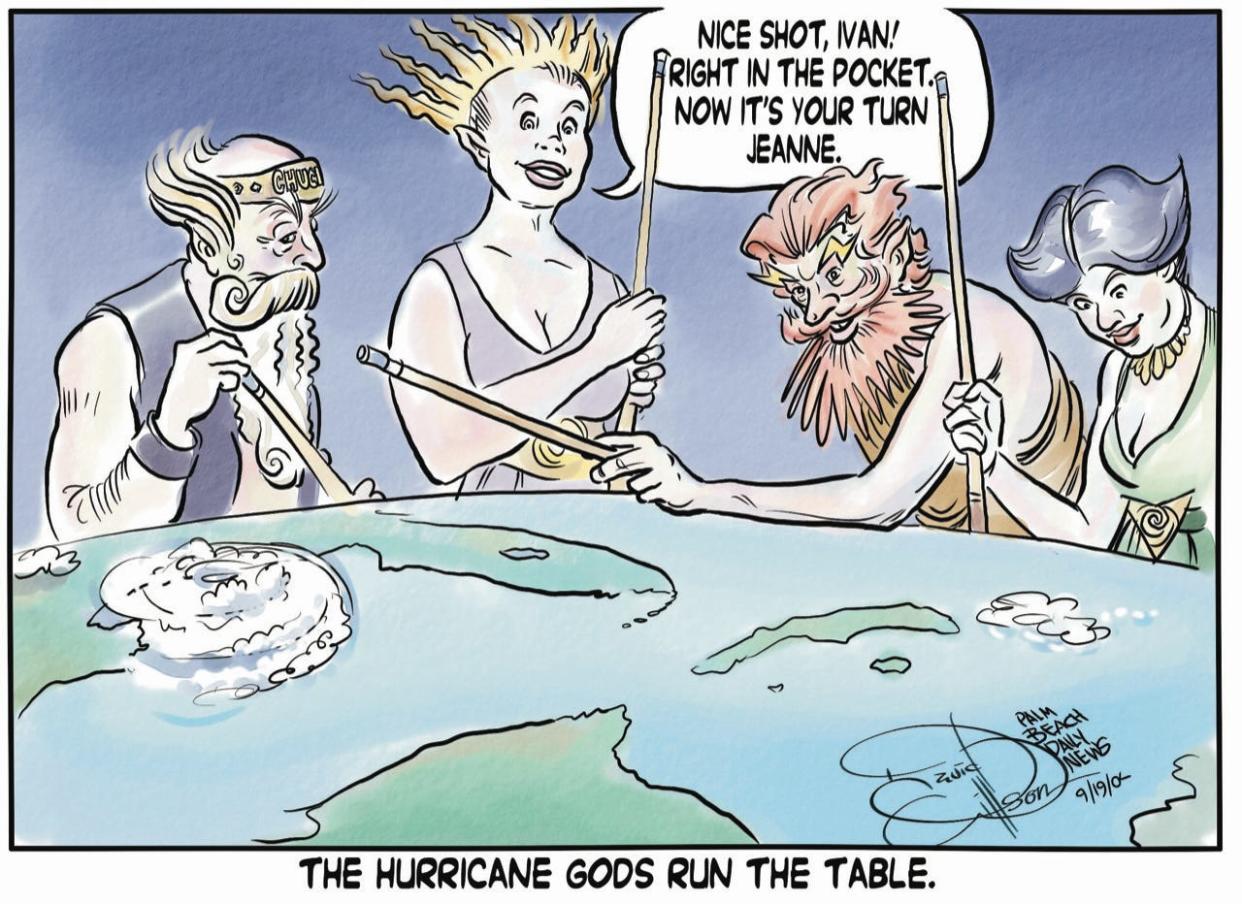Cartoonistry: Devastating hurricanes are a fact of life, but we still haven't learned that lesson

During the coverage of Hurricane Ian’s landfall at Cayo Costa, I heard one newscaster call it a “100-year storm.” Sorry, but as a Florida pioneer family descendant with plenty of hurricane tales to tell, I can assure you that bad storms such as Ian happen a lot more often than every 100 years.
It’s not unusual for people to be shocked by the outcome of these storms. The 1935 Category 5 hurricane that destroyed a large part of Flagler’s overseas railroad in the Florida Keys also was called “The Storm of the Century.” So was the 1926 storm that caused a storm surge that overtopped Key Biscayne and pushed deep inland from Biscayne Bay. Miami was left in ruins and 113 people perished.
Photographs of damage done to West Palm Beach by the 1928 hurricane look strikingly like those of Ft. Myers Beach today. It also famously flooded Lake Okeechobee to claim an estimated 2,000 lives. The cumulative disasters of the ’26 and ’28 storms brought the Florida land boom of the 1920s to a screeching halt. Banks failed because so many people withdrew their money and left Florida. The resulting statewide depression became a harbinger of the Great Depression.
My grandparents lost the roof on their Middle Road house in Palm Beach during the 1949 storm (a Cat 4) and spent the night huddled under a grand piano in the living room. That one destroyed 65 area homes and damaged more than 13,000.
In 2004, Category 5 Charlie made landfall exactly where Ian landed last week. Two more, Francis and Jeanne, landed in the same exact location just north of here within six weeks of each other. Francis spawned 23 damaging tornadoes. Jeanne hit just as we finished cleaning up. Four Florida storms in one season (including Ivan, which hit the Florida Panhandle) was what inspired my first Hurricane Gods cartoon for the Palm Beach Daily News.
And, of course, who can forget what Dorian, with 185-mph peak winds, did to Grand Bahama island and the Abacos just three years ago. A track a couple of inches to the left on the map and it would have been us.
The real measure of calamity, however, is not in the strength, path or frequency of hurricanes — they are a constant of nature. Florida is built to handle hurricanes, but mankind is not. Our homes, businesses, roads and bridges cannot withstand 15-foot storm surges and cyclonic winds, and we cannot recover like mangrove stands, grass flats and natural rivers.
Despite so many dire warnings from Mother Nature, our coastal population has exploded over the last 50 years. A steady stream of real-estate developers have swooped in and out, taken their profits and left behind hundreds of thousands of new transplants with little historical knowledge, often blithely ignorant and vulnerable.
There is, however, quite a bit that we can do — with education, regulations, engineering and just plain good sense — to reduce loss of life and damage from hurricanes. Hopefully, it won’t take another 100 years to get around to it.
This article originally appeared on Palm Beach Daily News: Coastal population continues to explode despite hurricanes

